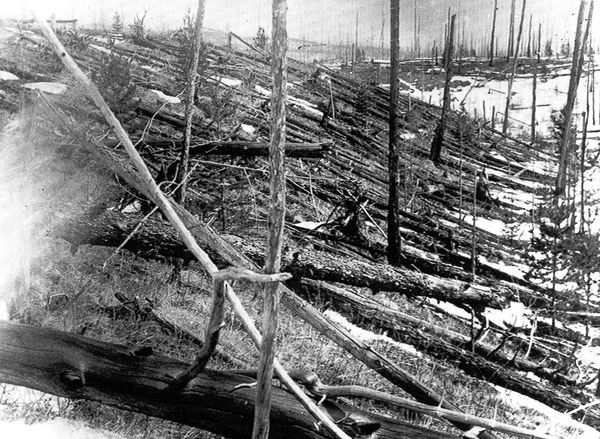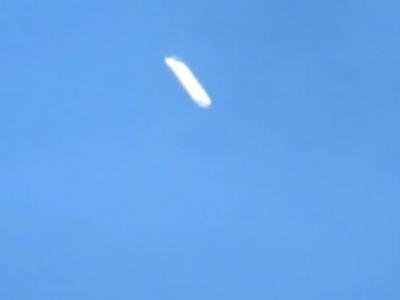Russian Meteorite Spotlights History's Other Crashes
Trees lay strewn across the countryside near Tunguska, Russia, in 1953, 45 years after a meteorite struck.
The meteor that exploded over Russia last night injured more than a thousand people and was unusually well documented, thanks to the widespread use of dashboard cameras by Russian drivers.
But it's not the first time people have seen or been hit by space rocks making landfall.
Meteorite landings have also been witnessed in Europe, Africa, Oceania, and South America, where, in 2007, Peruvian villagers were sickened by arsenic fumes released from an underground water source after impact.
But probably the most famous observed meteor exploded above the Tunguska River in Siberia in 1908. The disintegration of this rock, estimated to be about as tall as a 12-story building, leveled 800 square miles (2,000 square kilometers) of trees, shaking the ground and shining as bright as a second sun, in the words of one eyewitness.
While the damage around remote Tunguska took decades to discover, the 1992 Peekskill, New York, meteor was documented on video by 16 different observers. This event cast light that rivaled a full moon's glow and has put a lasting spotlight on the car whose trunk was crumpled by its impact.
Meteorites have crashed weddings and funerals too. In 1929, a meteorite struck a wedding party in Zvezvan in then Yugoslavia, according to the book Rain of Iron and Ice: The Very Real Threat of Comet and Asteroid Bombardment. And in 1924, a meteorite interrupted a funeral service near Elwell, Colorado.
It's enough to make you want to stay at home, but even that's no guarantee of safety. In 1954 in Alabama, Ann Elizabeth Hodges took a nine-pound (four-kilogram) meteorite in the hip after it punched through her roof and bounced off a radio, leaving her alive but bruised.
The recent Russian meteorite is not the first since 1954 to cause injuries to people, the event created the highest recorded number of injuries on record due to a meteorite, noted Michael D. Reynolds, adjunct astronomy professor at Florida State College at Jacksonville and author of the book Falling Stars: A Guide to Meteors and Meteorites.
Rocks chipped off the surface of Mars that eventually landed outside Alexandria, Egypt, in 1911 have been blamed for killing a dog, according to a farmer who witnessed the event. Some of this Martian debris is now on display at the National Museum of Natural History in Washington, D.C.
A couple of decades later, a Pennsylvania farmer suspects he saw one kill a cow.
Brad Scriber
National Geographic News
Published February 15, 2013












